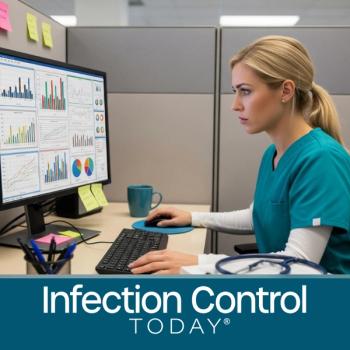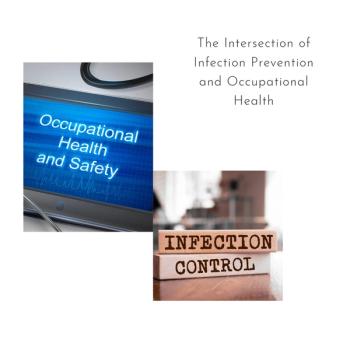
- Infection Control Today, July/August 2020 (Vol. 24 No. 06)
- Volume 24
- Issue 6
How to Build Cost-Effective Infection Prevention Programs at Long-Term Care Facilities
Infection control at LTCFs needs to be a balanced approach that addresses the risk of infection, and not just the treatment of infection. Money is saved when this approach is used.
It’s 5 pm on a Friday. Five residents are presenting with diarrhea, nausea, and vomiting. The director of nursing (DON) has already left for the weekend. The facility’s infection preventionist’s last day was Wednesday and no one has been hired yet. The DON tells the staff to call the medical director who orders stool cultures for Clostridiodies difficile, and foodborne illness.
By 7 pm, 10 residents have the same symptoms.
The staff report back to the DON. The DON is not sure what to do but knows that the facility’s former IP is still in town. She calls her. The former IP says that it might be norovirus and that the state Department of Health’s (DOH) after-hours number should be called. The number is in the infection control manual for reportable diseases. The IP also says there is a policy for norovirus, but no one knows where to find it.
This is an example, based on real events, of an infection prevention and control (IPC) program that has not outlived a person. Staff did not know what to do and the DON did not know she should call the DOH. Nobody knows what report forms are required to report the outbreak to the DOH and they don’t know the phone number of the DOH epidemiology branch to report the outbreak. This facility’s IP practices were dependent on a single person, not facility practice.
A strong, well-run IPC program costs more time than money. An initial investment toward training a facility’s IP and instituting a well-developed program is well worth the money and will save funds in the long run (which also means saving lives) for long-term care facilities (LTCFs). The right approach means not having to break the bank to install an effective IPC program.
How can this be done? Does a LTCF need a full-time certified IP on staff? No. What it needs is a well-developed program that belongs to the facility and not to a person. People come and go. There is no reason to redevelop your IPC program every time a person leaves the facility. Building a strong infrastructure is the key to a good long-standing program.
A well-developed IPC program helps to proactively manage and reduce any risk associated with healthcare-acquired infections (HAIs). IPC needs to be a balanced approach addressing risk of infection, not just looking at the treatment of infections. By using the risk approach to preventing infections, money is saved with the decrease in antibiotic cost, decrease in cost of personal protective equipment (PPE), decease in mortality and morbidly, decrease in nursing care, and a decrease in the risk of bad publicity.
In the time of coronavirus disease 2019 (COVID-19), many LTC facilities have found themselves on the front page of newspapers, in the headlines of the news media, and all over social media. The importance of well-developed and managed IPC programs has been front and center for months now. It is a great time for all healthcare organizations to review their IPC programs and decide how they can manage the risk going forward. It’s time to find the weak points in programs and strengthen them to win back the support of families and employees.
It is time to adopt a structured robust approach to managing the risk that comes with infections. LTCFs must manage these challenges, measure performance, and manage the changes that should come out of the worst pandemic this world has seen since the influenza pandemic of 1918.
There has been little change in ICP programs after severe acute respiratory syndrome (SARS), Middle East respiratory syndrome (MERS), and H1N1 influenza. These epidemics struck, and then many healthcare organizations quickly went back to what they were doing previously. All healthcare facilities should have programs that are designed around the facility needs and performance measures. And, as mentioned, they should be facility-driven, not person-driven. ICP programs should be based on trigger points for infection risk within a particular facility, and not based on a person’s knowledge of infection prevention. With a strong program in place, any person should be able to come into a facility and pick up monitoring IPC where the last employee left off. LTCFs must understand that infection prevention flows through all the organization, not just in a department called “Infection Prevention and Control.” That is just a name, not a practice.
Every department head should be aware of what their infection prevention and control role is. If the facility does not ensure this knowledge is embedded into their organizational infrastructure, there will never be a program that outlives a person. Once this is understood, there should be an immediate improvement in facility process.
COVID-19 shows us that LTCFs have always been the last to receive the support they need. LTCFs can no longer simply rely on an annual survey by the US Centers for Medicare and Medicaid Services (CMS). The survey reviews facilities in accordance to the standards that are written. If a situation identified as a problem by staff does not fit inside one of the standards with the CMS regulations, the problem will not and cannot be addressed by the surveyor. This is a great disappointment to staff who hoped the surveyors would cite the problem so it would get fixed. Staff do not speak up and tell surveyors where the problem areas are out of fear of being fired. When staff members have constant input in infection prevention practices, they have the opportunity to discuss and address issues of concern. A trust must be built within the facility so all employees can state their concerns and have them addressed.
The unfortunate truth is not all problems fit within a standard. The message to staff is no one cares. The message to management is “we didn’t get cited so it must be OK.” It has been this way for years, but it does not have to be.
There are specific components of an IPC program that should remain strong in any facility when there are changes in staff. Every facility needs support and action from the top down. Once a program is in place, each new hire gets oriented to the way the facility program is run and managed. New employees should not be hired to come in and reinvent the facilities’ IPC programs. These inconsistencies not only cost more money but can also cause injuries and death.
All staff in the facility should have the proven ability to apply essential knowledge and skills, and the ability to prevent infections and the cross-transmission of infections while caring for residents. Hands-on education is an important factor. A multidisciplinary group should include management, RNs, LPNs, CNAs, dietary staff, environmental services personnel, plant operations, purchasing, IP, risk management, and the quality management director.
Each department should identify what infection control risks fall to their area. The IP can then help research each area, identify risks, and provide information on how to decrease that risk. For example, plant operations: Every time a wall is removed or some construction is performed, no matter how small, it will stir up dust, and within that dust might be Aspergillus spores, which are common in the environment. If there is a resident with chronic obstructive pulmonary disease (COPD), asthma, or who is on a ventilator, this airborne Aspergillus is now a risk for residents with a compromised respiratory tract system. It can cause Aspergillus pneumonia leading in many instances to death. If a solid barrier had been put up before that dust was generated, the Aspergillus would be confined to behind the barrier and would not have caused an adverse event and harm to a resident.
The plant management director’s last day was Wednesday, but he has not finished implementing the water management program that was required to be in place in November. It is now January. The hospital hired a new director for this department in December. CMS surveyors want to see the facility’s water management plan. The quality department director calls the new director in plant management and asks him to bring the water management plan to her. The director states he doesn’t have a water management plan. The new director and old director never talked about it. Again, this facility was not in control of its practices and policies did not outlast the person. Another example of a system breakdown with change management.
CMS now requires facilities to have a water-management plan. This affects plant operations again, but it also affects every employee, resident, and visitor. The water-management plan is designed to identify any area of risk within the facility that can cause bacteria to grow in the water that residents drink or bathe in. The same water is aerosolized when the residents are bathed, exposing the healthcare worker (HCW) who is bathing the resident.
The aerosolization of the water is then breathed into the lungs of the resident and the HCW. This can lead to Legionella infections of the lungs. Any area throughout the waterline where there is standing water can lead to growth of Pseudomonas, Legionella, and other water-borne bacteria leading to an increased risk of infections.
If the facility has piped-in oxygen and the oxygen tanks that pump in the oxygen to the building are not maintained, they can become contaminated. If shower heads are not cleaned or changed on a rotating basis, the shower heads can become a source of infection. Aerators on sinks have been linked to many outbreaks of Pseudomonas infections. How a toilet plunger is carried through the facility can contaminate the environment with coliform bacteria.
These are just some examples of how IPC is part of a plant operation department. Employees of this department need to know the policies and procedures for mitigating risk.
Once these are in place, all future employees should be following the same practices, not reinventing the practice. Any policy and procedure in this area should provide guidance for a new employee on how the process is done unless they can provide documentation of updated standards, guidelines, or regulations that justify a change in practice.
This is just a start to creating an effective IPC in an LTCF, but it’s a good start. The important thing is: Start!
Linda Spaulding, RN, CIC, BC, CHEC, CHOP, is an infection prevention consultant and founder of InCo and Associates International, Inc.
Articles in this issue
over 5 years ago
IPs Must Ensure the Supply of PPE for COVID-19’s Second Waveover 5 years ago
Navigating the New Normal in Infection Preventionover 5 years ago
Handwashing: Is a New Normal Possible?over 5 years ago
National Reporting System for All Dangerous Pathogens Neededover 5 years ago
Hand Hygiene in the Post-COVID-19 EraNewsletter
Stay prepared and protected with Infection Control Today's newsletter, delivering essential updates, best practices, and expert insights for infection preventionists.






